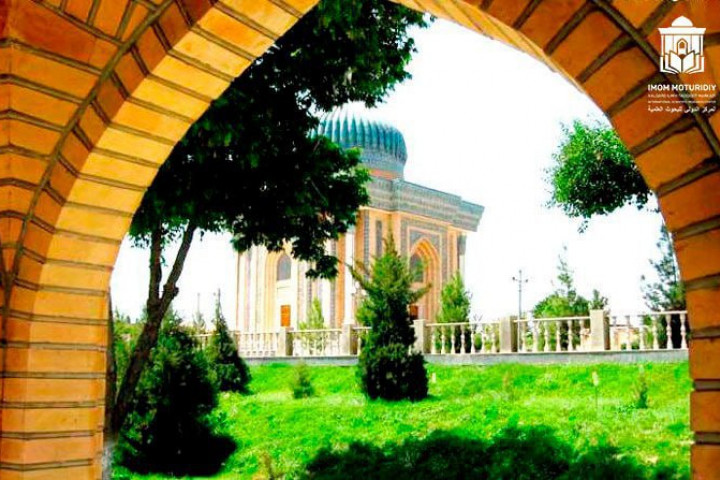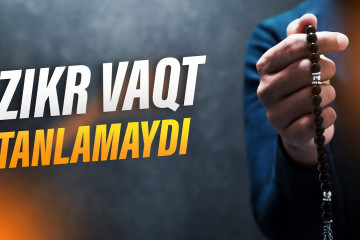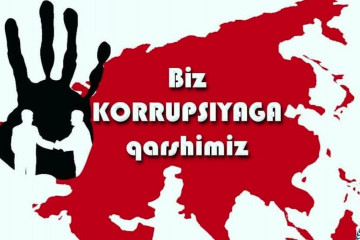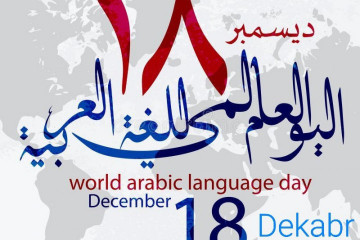
CONTRIBUTION OF BIOGRAPHICAL DATA FOR SOCIAL AND CULTURAL HISTORY: EPITAPHS FROM ABU MANSUR AL-MATURIDI’S CEMETERY
CONTRIBUTION OF BIOGRAPHICAL DATA FOR SOCIAL AND CULTURAL HISTORY: EPITAPHS FROM ABU MANSUR AL-MATURIDI’S CEMETERY
Introduction
The paucity of written sources creates difficulties for a full-scale study of the history of Samarkand, the capital of the Qarakhanids (999-1211). Three monuments of historical and biographical literature survived on the history of Samarkand: al-Ansab by Abu Sa‘d as-Sam‘ani (died in 1167), Kitab al-qand by Abu Hafs an-Nasafi (died in 1142) and extractions from it Muntahab Kitab al-qand by Muhammad ibn ‘Abd al-Jalil as-Samarkandi (12th century). Only fragments of the last two have survived, the biographical dictionary al-Ansab draws its main attention only to one part of the scholars of this city – Ahl al-hadith and the Shafi‘i jurists. New sources will be needed to fill the gaps in the large-scale study of the second half of the 12th century.
Qayraqs
Qayraq is a grave river jackdaws with epitaph texts inscribed on them. The etymology of the word goes back to the Turkic term “Qayraq”, which means “whetstone”. It is the shape that resembles a stone for sharpening cutting objects that gave it its name. They are large pebbles found in abundance in the foothill floodplains of rivers throughout the Central Asian region. It was one of the most convenient and relatively cheap materials for making tombstones.
Cemetery
Qayraqs are found at Chakar-Diza cemetery, located in the eastern part of Samarkand, which was called Shahr-i Birun. It is located outside Afrasiab, which was a historical city before the invasion of Genghis Khan in the first quarter of the 13th century. In 945, Abu Mansur al-Maturidi found rest here. Al-Maturidi in the 11th-12th centuries began to be revered as the founder of the teachings of al-Maturidiyya. In this regard, a cult-memorial complex was erected at the place of his burial. This cemetery was completely destroyed during the Soviet era in the 1940-1950s.
Structure of Qayraq Funds
In 2000, for the official celebration of the anniversary of Abu Mansur al-Maturidi, archaeological research was carried out in one part of the Chakar-Diza territories. 38 units of Qayraqs and several ceramic briquettes were found there. Dimensions and light weight of Qayraqs make Qayraqs easy to transport. Our work in 2006 showed that the collection of Qayraqs has ended up in various museum collections and repositories of Samarkand city:
1. National Museum of Ethnography – 118 Qayraqs
2. National Museum of Uzbekistan – 2 briquettes + 34 Qayraq
3. Chakar-Diza Complex – 28 Qayraqs
4. Institute of Archeology – 7 briquettes + 17 Qayraqs.
5. Museum of the History of Samarkand, Afrasiab – 1 Qayraq Collecting and Preliminary Study of Qayraqs
The systematic collection of inscriptions on Qayraqs was carried out by:
I. Amateur photographer Grigorii Pankrat’ev, captain of the Russian army, worked in Samarkand in 1894-1904. He performed a complete album of monuments of ancient Samarkand and its environs. In fact, they contain the texts of 37 Qayraq units. Several of them are unique.
II. Amateur archaeologist Vasilii Viatkin began collecting and preliminary study of Qayraqs from 1904, which were of an episodic nature and have not yet been completed. His archive contains information about 130 units of Qayraqs.
III. In 1960s the archaeographic detachment Institute of History, Archeology and Ethnography named after Ahmad Donish of the National Academy of Sciences of Tajikistan under the leadership of Ahror M. Mukhtarov, including R. Odilbekova, V. Ibragimov, M. Makhmadshoev, collected materials on the inscriptions of Samarkand.
Publications
Single inscriptions were published in translation into Russian, rarely together with their originals in different years by 17 researchers. Complete Editions
239 inscriptions were published by IRCICA in 2019. A year later new information on 15 Qayraqs were added to this amount.
Dating of Inscriptions
Of all 255 inscriptions, 156 ones are dated, and the rest have no any dates. Most part – 123 inscriptions belong to the 12th century; and 26 ones – 13th century. Four represent the 14th century. One dates back to the 15th century, another from the 19th century.
Calligraphy Art
Most of Samarkand epitaphs can be considered as original examples of the art of Arabic calligraphy. In these epitaph texts, different styles of Kufi, Naskhi, Rayhani, Thulth, etc. handwritings were used.
Incipit of Inscription
Usually, each inscription begins with expressions such as “hadha – qabr” (This is the grave of ...), “hadha – marqad ...” (this is the last refuge of ...). However, in some of the qayraqs, such a beginning is absent due to the loss of some part of the texts.
Broken Qayraqs
Indeed, a significant part of the qayraqs survived in the form of fragments. There is information that the stones were broken during the period of the Russian conquest by newcomer settlers in search of gold, allegedly hidden inside the qayraqs.
Epithets
The standard epithets that were attached to the names emphasize the special social status of the deceased man; they call their professions, transformed titles and other merits of the deceased. Most were “professional theologians”, but retaining generic nicknames associated with the craft profession. These are coppersmiths, coarse calico makers, bathhouse attendants, carpenters, papermakers, engravers, butchers, saddlers, merchants, grocers, blacksmiths, etc. Moreover, judging by the epithets and titles, most of these persons did not necessarily engage in their ancestral craft.
Spiritual Positions
An insignificant part was engaged in theology, as the hereditary occupation of their ancestors, while at the same time being imams, qadis, teachers of madrasas, etc.
Women’s Qayraqs
Vasilii Viatkin incorrectly reported the complete absence of female qayraqs. However, we have established the existence of eight “female qayraqs”: B–8; Q–077, Q–078, Q–085, Q–119, Q–120, Q–137, Q–160.
Ayats and Poems
There are gravestones with the Quranic Ayats, verses (marthiya) written especially for the deceased. A couplet in Persian is found on the Qayraqs Q-095, Q-097, Q-108, Q-117, Q-119, Q-180.
Rulers
Representatives of the ruling dynasty were buried next to the ulema: Tulur Tekin Bek Muhammad ibn ‘Abd al-Malik as-Samani (Q-006), Arslan Ilekbashi Mawdud ibn Muhammad al-Uzjandi (Q211), Muhammad ibn Mawdud ibn Muhammad al-Uzjandi (Q–219), Amir Yuwash bek Muhammad ibn Muhammad ibn Ahmad as-Sirkati an-Nawgilimi (Q–124), Toganji Muhammad ibn Muhammad ibn Ahmad (Q–143) and others.
Social Aspects: Ideological Clichés
The inscriptions themselves always remained before the eyes of the visitor on the territory of the shrines. The texts were “refreshed” with mineral paints (ocher), presumably orange and light colors. This was done solely so that the epitaphs of the tombstones were conspicuous and clearly distinguishable.
Many eminent theologians of the Qarakhanid period, while retaining their independent status, apparently easily collaborated with those in power, which is why their names were accompanied by appropriate titles, such as (aziz al-muluk wa-s-salatin, iftakhar al-muluk wa-s-salatin) “assistant / henchman of the sultans of the time”, “support of the rulers of the era” or similar characteristics of the deceased.
Social Aspects: Educating Readers
The Qarakhanid dynasty used the method of establishing relations with authoritative theologians, using them as an important tool for internal political regulations. Epigraphy became a way of instilling certain norms. The reminder in the epitaphs of the deceased as carriers of the qualities of personal piety, selfless service to the ideals of religious precepts, as carriers and transmitters of the norms of social ethics, scholarship expanded the function of epigraphy, turning it into a method of public proclamation. It became a means of consolidating ethical prescriptions, supporting their religious, and more broadly, cultural identity.
Religious Politics: Alien Scholars
Many eminent theologians from foreign and neighboring countries were used by the Qarakhanid dynasty for the realizing their religious policies. It was found that there were seven groups of foreign scientists in Samarkand.
Gharib and Shahid
It is noteworthy that in ten cases out of all 28 texts of epitaphs for death in a foreign land (maut fi-l-ghurba), the deceased were given the honorary status of “shahid” (“martyr for the faith”; Q-012; Q-015; Q-065; Q-069; Q-070; Q-084; Q-110; Q-114; Q-115; Q-189).
Relative Names (Nisbas)
Based on the regions of origin of the scholars-‘ulama’ buried in Samarkand, it can be conditionally subdivided into three “internal” (within the territory of the Qarakhanid state) and four “external” groups (Khorasan and Iraq):
1-group: South Sogd (Kesh, Nasaf, Pazda, Ghubdin) - 11 people;
2-group: Turkestan (Isbijab, Shaljikath, Jikil, Taraz) - 9 people;
3-group: Fergana Valley (Kasan, Uzjand, Khujand, Khvakand) - 7 people.
Khorasan (Balkh – 6 persons, Merv – 7 ones, and Nishapur – 4 persons), Iraq (Baghdad – 2 persons) and Khorezm (2 persons).
Local School History: Book Titles Cited
Some gravestone texts convey information that is extremely important for researchers – what theological writings the deceased have mastered. It is these epitaphs that show the merits of the name of the person both to the school he represented and to the society, and what contribution he made to the formation of the local theological and law school.
Creation of al-Maturidiyya: Restoration of the Epitaphs of the “Ancients”
Mikhail E. Masson, on the basis of a detailed study of the linguistic features of the texts and the construction of the epitaphs, managed to prove the relatively late origin of some texts and the later production of these qayraqs. He introduced the concept of “relatively late renewal of old epitaphs”, suggesting that the renewal of some grave monuments of popular early medieval figures was done for one reason or another.
The restoration of the tombstones of the predecessors and followers of al-Maturidi was intended to reinforce the authority of al-Maturidi and showes the universality of his teachings in the new conditions of the Qarakhanid rule. These are al-Hakim al-Samarkandi [d. 953], ar-Rustufaghni [d. 961;], Abu Salama al-Samarkandi. Of course, tombstones over the graves of persons of this rank could hardly have been erected without the knowledge of the Qarakhanids. The Qarakhanids almost directly initiated and apparently financed the revival of the cult of persons associated with the teachings of al-Maturidiyya.
Using the Methods of Two Madhhabs
The titles “Expert of [methods] of two madhhabs” or “Possessor of [knowledge] of two schools” occur in four cases. We can understand these titles of the deceased persons as the owners of the methods of different schools (here Hanafiyya and Shafi‘iya). This shows the ability of theologians to appeal to the achievements of their natural competitors to solve their current problems. This approach helped the Hanafi scholars to improve their writings and textbooks.
Egyptian Author at-Tahawi
The works of the Egyptian author at-Tahawi (d. 933) were previously little known in Central Asia. ‘Ali ibn Muhammad al-Isbijabi (d. 1141 at the age of 81) in his work on fiqh Sharh Mukhtasar at-Takhavi was the first to use the methods of the Shafi‘i madhhab to strengthen the degree of substantiation of the provisions of the Hanafi theological and legal school. This was impossible under the Samanids (204–395/819–1005), who built their policy on the opposition of the Hanafis and the group “Ahl al-Hadith”.
Errors in the Text
The inscriptions contain direct and indirect information reflecting to linguistic situation, the degree of literacy of the masters, etc. Poems in Farsi, poor command of the compilers of the text in Arabic are inherent in the texts of the qayraqs of Samarkand.
Local Languages and Terms
Old Soghdian and Turkic titulature is encountered quite often. For example, “Khwaja”; Tulur Tekin Bek; “Khwab-Dida”; “Yuvash Bek”; “Khatun” applied to noble women of the Turkic aristocratic families, or “Ispah-salar” (leader of the army), etc.
Dihqan
In the text of Q-010 of interest is the combination in the name of the deceased of two dissimilar aristocratic titles – a descendant of a dihqan and a Khalidi, descendent of Khalid ibn al-Walid alMakhzumi (died 642).
Research Perspectives
Promising areas for conducting prospecting work can be considered:
a) organization and carrying out of archaeological excavations around the complex “Abu Mansur al-Maturidi”, the uncovered part of “Chakar-Diza, ”the medieval cemetery for the spiritual and secular elite of the pre-Timurid era;
b) Survey of the territories of holy places, old cemeteries, private yards within the historical Samarkand and its surroundings;
c) Carrying out a re-inventory of the funds of museums and depositories in Samarkand and Tashkent.
Dr. Ashirbek Muminov,
Head of the Research and Publications Department, IRCICA
 УЗ
УЗ
 РУ
РУ
 EN
EN
 العربية
العربية






Izoh qoldirish